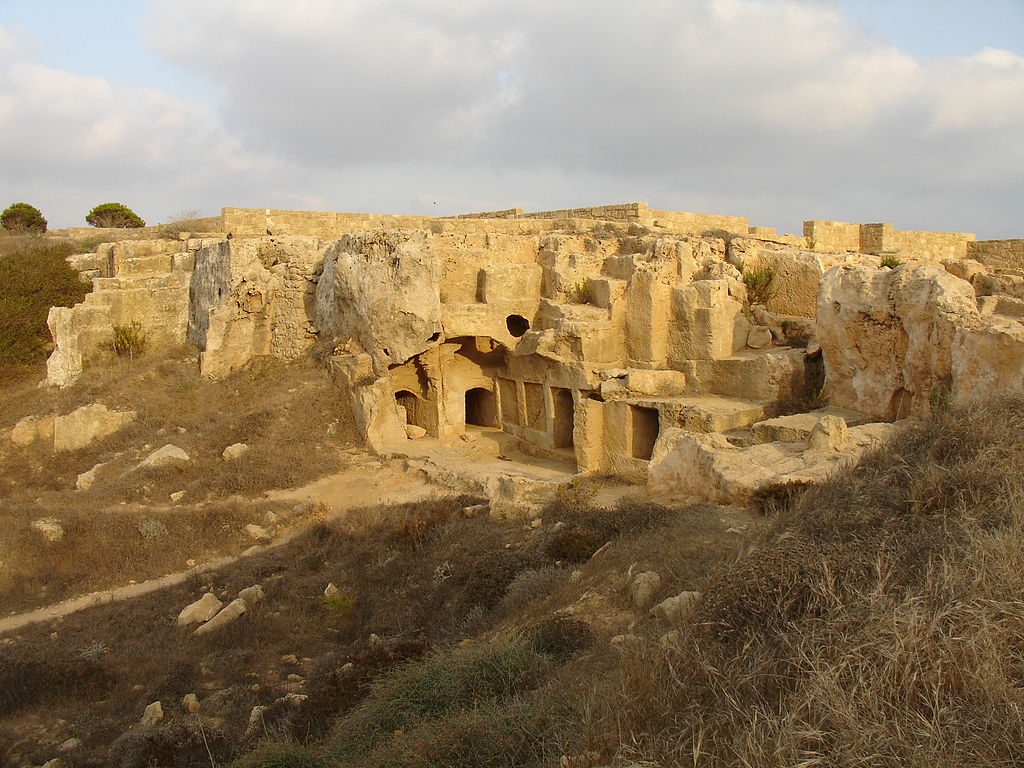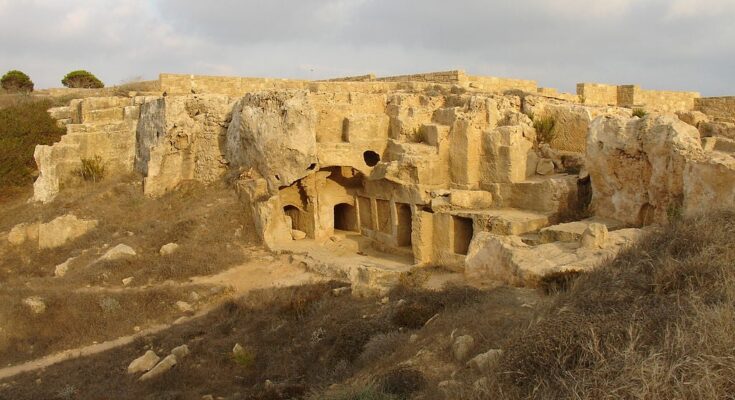
The Tombs of the Kings are part of a large necropolis lying about two kilometers north of Paphos Harbor at the westernmost point of the island of Cyprus. They were designated a UNESCO World Heritage Site, along with Paphos and Kouklia, in 1980.
The tombs, many of which date back to the 4th century BC, are carved out of solid rock, and are thought to have been the burial sites of Paphitic aristocrats and high officials up to the third century AD.
Strangely, the word “Kings” references only the magnificence of the tombs; no kings were in fact buried here, historians believe. The name merely shows the “grandeur and monumental characteristics of these tombs,” says theologian Simon Peter Sutherland. They are famous for their great elegance, resembling the imposing homes of well-off people at the time.
Tombs of the Kings feature Doric columns, frescoes
Some of the tombs, cut into the bedrock, feature Doric columns and even frescoed walls. Dating back as far as 300 BC, the tombs were used all during the Hellenistic and even Roman eras.
Historians believe their structure was heavily influenced by ancient Egyptian tradition, which called for the tombs for the dead to resemble houses they once lived in.
The seven tombs that have been excavated so far are scattered over a wide area; the most impressive is the third one, which has an open atrium below ground level, surrounded by columns, as Lonely Planet notes in its description of the tombs. Other tombs resemble the catacombs of Rome, where niches built into the walls once held bodies.
Tombs once used as hideouts by early Christians
Cyprus was invaded by the Romans in 58 BC. Many early Christians later came to Cyprus and a number of them would meet in Paphos. They were known to flee to the tombs during the horrific early persecutions of the Roman era as well, celebrating their liturgies there in secret, Sutherland notes.
The Apostle Luke notes in his Gospel that many early Christians fled to Cyprus to avoid the ongoing persecutions of them elsewhere.
The tombs have been known and casually explored for centuries, but archaeological excavations are still being carried out at the site. The oldest modern account of the Tombs was written by Richard Pockocke, in 1783.
Related: Spectacular Hellenistic-era mosaics discovered in 2021 in Paphos
Almost a century later, in 1870, the first archaeological excavations were conducted by Luigi Palma di Cesnola, the Italian-born American consul to Cyprus. In 1915 the first excavations under scientific supervision took place, led by Menelaos Markides, the curator of the Cyprus Museum.
Systematic excavations also took place in the late 1970s and the 1980s under the direction of Dr. Sophocles Hadjisavvas, the former Director of Antiquities of the Republic of Cyprus.
Amphorae in tombs helps date events in Eastern Mediterranean history
Part of the importance of the tombs lies in the Paphian habit of including Rhodian amphorae among the offerings in a burial. Through the manufacturing stamps placed on the handles of these amphorae, it is possible to give them a date and, through them, the other material that was found in the same burial.
Thus, this practice has led to the development of a more secure chronology for archaeological material in the Eastern Mediterranean of the Hellenistic and early Roman periods.
It is believed, however, that tragically, much of the information related to the tombs was lost over time. Historians believe that many of the tombs were rich in expensive grave goods, despite that very few such objects were found by the official archaeological missions, leading experts to believe that grave robbers may have taken many treasures from the site.
Also, as has happened elsewhere in Cyprus, the tombs’ proximity to the sea hindered the preservation of the buried bodies. Despite those obstacles, the historical significance of the Tombs is well established among experts worldwide.



